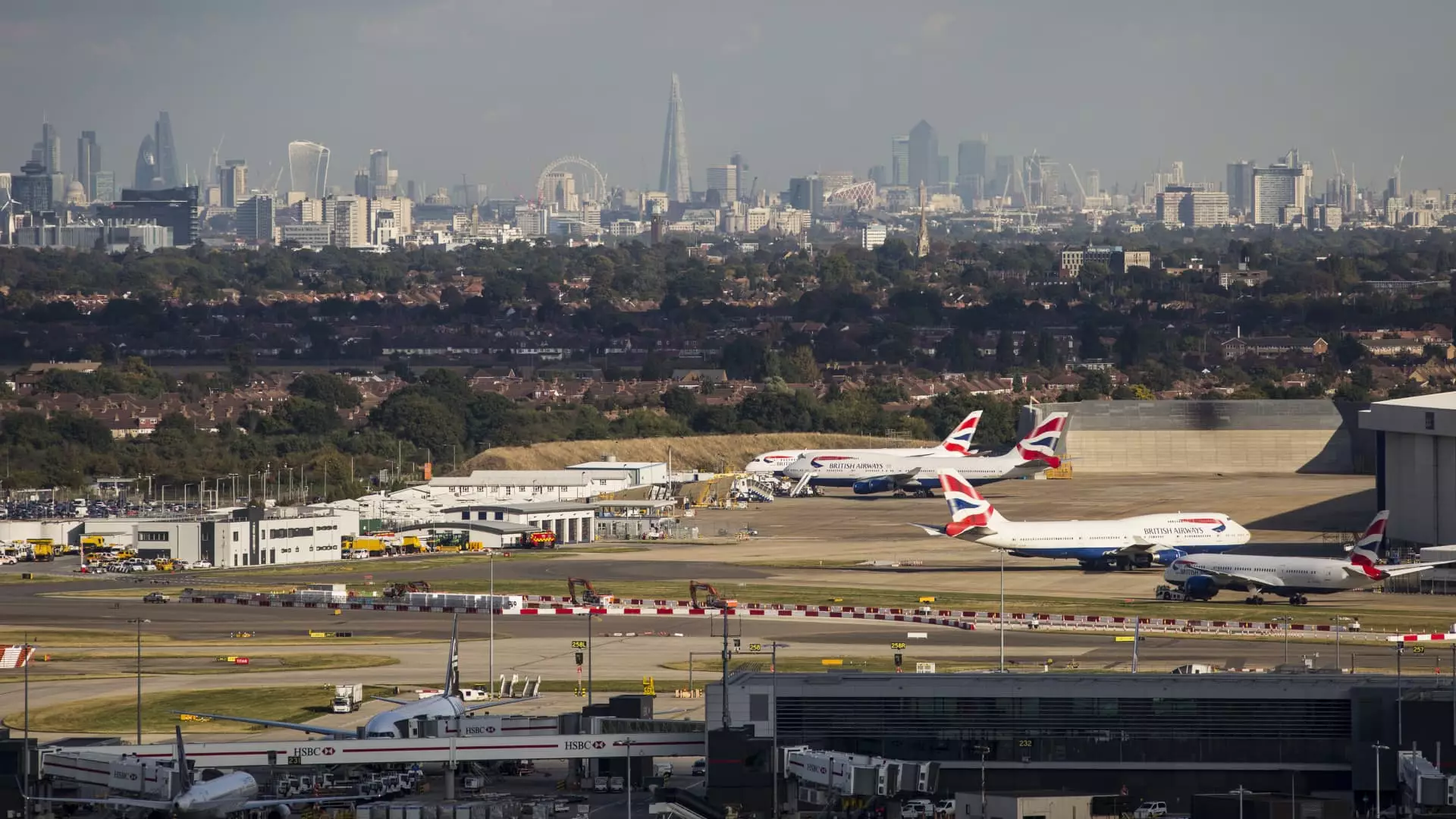As discussions regarding the construction of a third runway at Heathrow Airport gather pace, the implications for the UK’s transportation strategy and broader economic growth are significant. The airport’s chief executive, Thomas Woldbye, has articulated a compelling argument for the necessity of additional capacity in light of increasing passenger numbers and the demands placed on aviation services post-pandemic. However, the contentious nature of this proposal—woven into a complex fabric of political, environmental, and logistical considerations—raises the question: can Heathrow truly secure the approvals it requires to move forward?
The necessity for enhanced airport capacity at Heathrow is underscored by notable increases in passenger traffic. In 2023, Heathrow welcomed approximately 79 million passengers, a significant rebound from the 62 million recorded in the previous year as travel restrictions imposed by the pandemic eased. This uptick nears the pre-pandemic record of 80.9 million passengers in 2019. Woldbye’s assertion that Heathrow is “running out of capacity” reflects a broader concern shared across the aviation industry, where airlines grapple with high competition and soaring operational costs, particularly regarding the procurement of flight slots.
The proposed third runway, placed to the northwest of the existing infrastructure, aims not only to accommodate growing passenger numbers but also to alleviate the pressure on the current two-runway system, which operates under an annual cap of 480,000 flights. Expanding these operations by an additional 260,000 flights could usher in a new era for UK aviation. Woldbye emphasizes that realizing this expansion requires collaborative support from the UK government, industry stakeholders, and local communities, indicating that collective buy-in is critical.
The Infrastructure Dilemma
However, the road to a third runway is fraught with hurdles. Woldbye has made it clear that while Heathrow has a plan ready for implementation, the ultimate decision lies with the government—a body that must weigh the infrastructure project’s potential benefits against public sentiment and environmental responsibilities. The ongoing debate surrounding airport expansion is a microcosm of the larger conversation about infrastructure development in the UK, revealing a society increasingly divided over prioritizing economic growth versus environmental conservation.
Historically, proposals for expansion at Heathrow have faced intense scrutiny. Environmental advocacy groups, such as Friends of the Earth, vocalize concerns regarding increased greenhouse gas emissions and threats to local wildlife. These sentiments resonate with many community members who fear that expansion would exacerbate noise pollution and result in significant disruptions, including extensive modifications to the M25, London’s principal transport artery. Such considerations have led to lengthy legal reviews and consultations, contributing to a two-decade saga of uncertainty regarding Heathrow’s expansion plans.
Discussions at the Airlines 2024 conference reflect a shifting political landscape, particularly with the emergence of a new Labour administration. Transport Secretary Louise Haigh noted her support for airport expansion, provided it aligns with economic growth and environmental commitments, signaling a potential alignment between government strategy and the needs of the aviation sector. However, Woldbye’s urgency for a final decision by the end of 2025 reveals his awareness of the ticking clock on this endeavor; prolonged indecision could jeopardize financial investments and the airport’s long-term strategic viability.
Woldbye’s plan also includes proactive measures to enhance capacity at Heathrow without adding a third runway, demonstrating a dual approach that balances immediate efficiency with long-term expansion goals. If government funding fails to materialize, the airport would be required to propose a solid, economically viable plan to its shareholders, a task not without its complexities. The interplay between securing public support and demonstrating commercial viability only adds to the airport’s challenge.
Future Outlook
The decision on Heathrow’s third runway stands at a pivotal moment, one that could shape the future of UK aviation. As Woldbye himself articulated, the necessary groundwork for this expansion has long been laid; it remains to be seen whether the government is prepared to embrace the opportunity for infrastructural advancement or retreat from the complexities posed by environmental challenges.
Heathrow’s history of expansion debates illustrates the broader tensions within UK infrastructure development—tensions that are increasingly pertinent in a world grappling with climate change and sustainable progress. Ultimately, the question of whether Heathrow can secure the necessary approvals transcends airport operations; it encapsulates a national dialogue on growth, sustainability, and the future of transportation in an interconnected world.


Leave a Reply